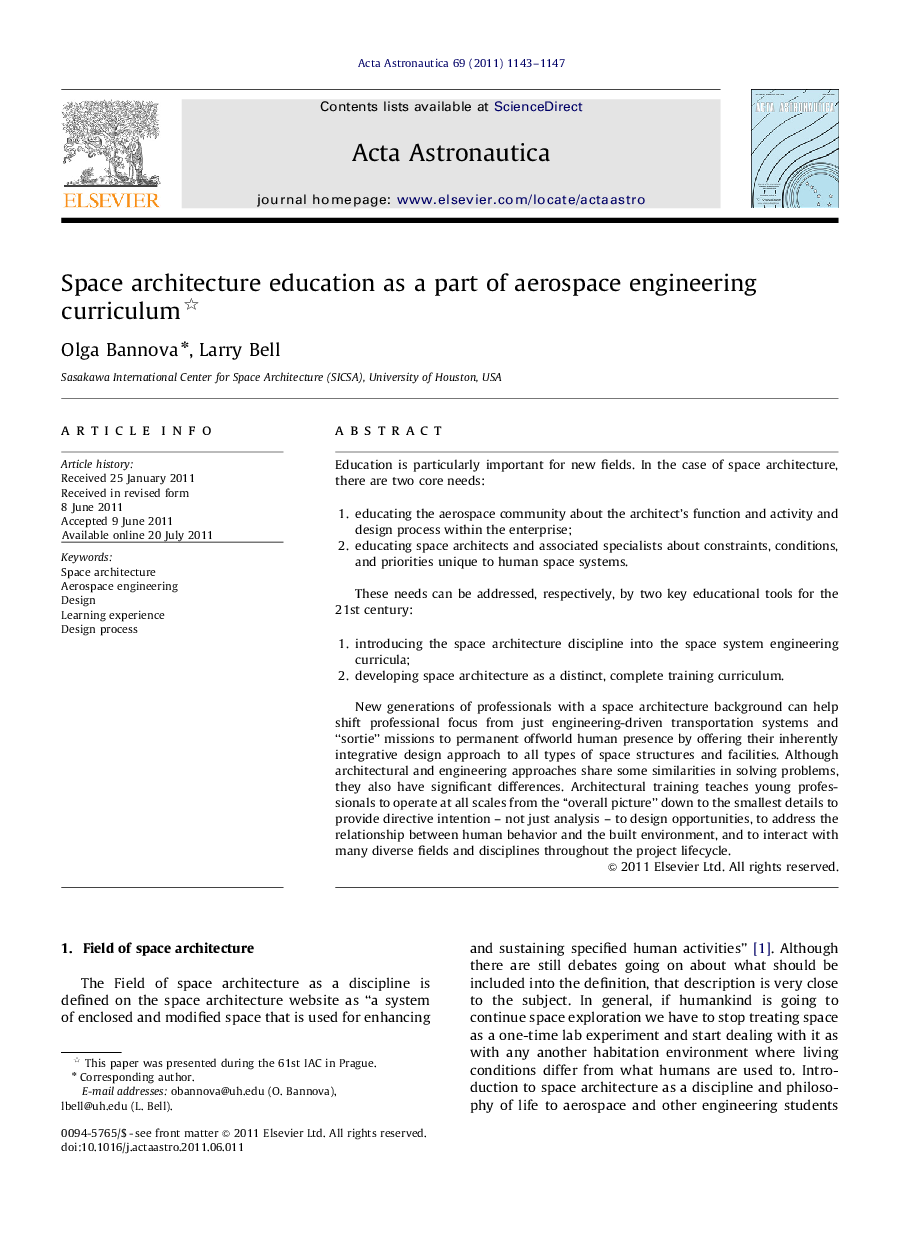| Article ID | Journal | Published Year | Pages | File Type |
|---|---|---|---|---|
| 1715522 | Acta Astronautica | 2011 | 5 Pages |
Education is particularly important for new fields. In the case of space architecture, there are two core needs:1.educating the aerospace community about the architect's function and activity and design process within the enterprise;2.educating space architects and associated specialists about constraints, conditions, and priorities unique to human space systems.These needs can be addressed, respectively, by two key educational tools for the 21st century:1.introducing the space architecture discipline into the space system engineering curricula;2.developing space architecture as a distinct, complete training curriculum.New generations of professionals with a space architecture background can help shift professional focus from just engineering-driven transportation systems and “sortie” missions to permanent offworld human presence by offering their inherently integrative design approach to all types of space structures and facilities. Although architectural and engineering approaches share some similarities in solving problems, they also have significant differences. Architectural training teaches young professionals to operate at all scales from the “overall picture” down to the smallest details to provide directive intention – not just analysis – to design opportunities, to address the relationship between human behavior and the built environment, and to interact with many diverse fields and disciplines throughout the project lifecycle.
► Importance of space architecture as a discipline. ► Interdisciplinary design process for space exploration missions. ► Necessity of introducing the space architecture discipline into space engineering curricula. ► Developing space architecture as a distinct, complete training curriculum.
